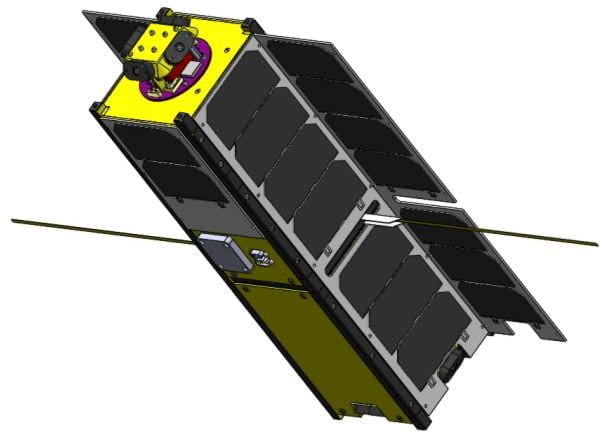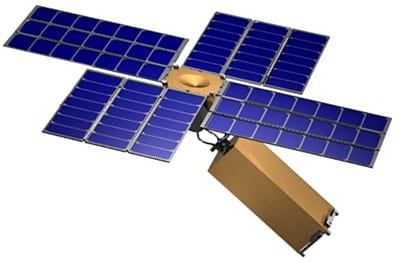MicroNimbus is a small satellite mission being developed by the Georgia Institute of Technology and Georgia Tech Research Institute that will utilize a frequency-agile mm-wave radiometer to measure and update the temperature profile of the atmosphere from a 3U CubeSat platform. The on-board radiometer instrument will provide atmospheric temperature profile data at an altitude resolution of 10 km, a geographic resolution of 0.5°, and a temperature resolution of 2K RMS. The mission strongly aligns with the goals set forth in NASA’s Science Plan and will generate data valuable to researchers in the fields of weather forecasting, LIDAR, and laser communications.
MicroNimbus has passed its Preliminary Design Review (PDR) phase and is moving towards the Critical Design Review (CDR) for the mission. If successful, MicroNimbus will serve as a first step towards the creation of a constellation of satellites designed to perform near real-time temperature profiling of the atmosphere. Atmospheric sounding missions have played a critical role in NASA’s and NOAA’s ability to monitor, analyze, and predict weather over both short and long time scales. One example of this is the NASA Nimbus 6 satellite − part of the Nimbus series of missions (to which MicroNimbus’ name pays homage). One of the many instruments carried by Nimbus 6 was a passive microwave radiometer in the 60 GHz regime that was used to retrieve atmospheric temperature profiles. Another similar, and currently active, mission by NASA is the Aqua (EOS PM-1) satellite. Specifically, the AMSU instrument onboard Aqua is capable of scanning between 10 channels in the ∼60 GHz range where O2 absorption lines occur.
However, the need for global, near real-time weather and temperature measurements has led researchers to look into the use of small satellites, specifically CubeSats, to obtain this data. In recent years, CubeSats have been utilized by the scientific community in the area of remote sensing due to their low cost, fast development schedules, and unique mission architecture configurations (formations, constellations, etc.) MicroNimbus attempts to do just this; to perform scientific experiments similar to those carried out by Nimbus 6 and Aqua at a fraction of the cost and development time.
Specifically, the MicroNimbus mission attempts to miniaturize the design of a microwave radiometer, such as the Nimbus 6 SCAMSa and the AQUA’s AMSU instrument, through the use of a silicon-germanium (SiGe) integrated receiver front end and a corrugated horn antenna design. While SCAMS and AMSU focused on scanning three and ten different O2 absorption bands respectively, MicroNimbus will scan through seven. Furthermore, MicroNimbus will make use of the CubeSat platform in order to reduce the cost and development times required to obtain this type of atmospheric sounding data
Sources and Additional Information:
- https://ieeexplore.ieee.org/document/8127564
- https://apps.dtic.mil/dtic/tr/fulltext/u2/1076181.pdf
- https://arc.aiaa.org/doi/pdfplus/10.2514/6.2018-1941
- Parkinson, C. L., “Aqua: An Earth-observing satellite mission to examine water and other climate variables,” IEEE Transactions on Geoscience and Remote Sensing, Vol. 41, No. 2, 2003, pp. 173–183.
- Selva, D. and Krejci, D., “A survey and assessment of the capabilities of Cubesats for Earth observation,”
Acta Astronautica, Vol. 74, 2012, pp. 50–68.
| Acronym | n/a |
| Full Name | MicroNimbus |
| Size | 3U |
| Status | |
| Launch Date | |
| NORAD ID | |
| Downlink Frequency |



